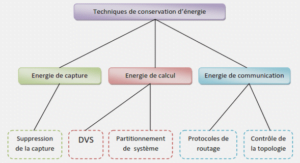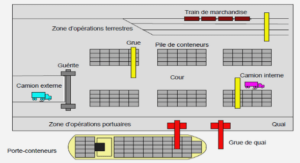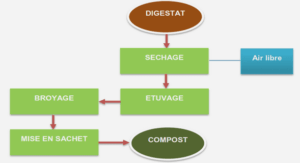Plasma diagnostics – optical emission spectroscopy
Carbon is a nonmetallic element with four valence electrons available to form different covalent chemical bonds. It lets various configurations of carbon atoms in different structures to exist (known as carbon allotropes). Graphite and diamond are among the natural form of carbon. However, there are other more recently discovered forms of carbon such as: graphene, fullerene, carbon nanotube, amorphous carbon. Each has its own properties and its own specific application. Diamond’s unique properties are derived from carbon-carbon strong chemical bonding. Here are some outstanding diamond properties: – High hardness and wear resistance – Chemical inertness – Low electrical conductivity – Optical transparency Hence, for the past 40 years a variety of techniques have been employed to find an alternative production method for the natural diamond formation condition, which requires very high temperature and pressure. Diamond Like Carbon (DLC) is a general term given to a broad range of amorphous carbon materials that are produced by different techniques from pure PVD to different CVD processes. Several studies were implemented to employ this coating in different fields of application that are discussed in the next section.
DLC applications
DLC coatings were first employed for their mechanical properties as a hard wear resistant coating for protection and friction reduction purposes such as: in gears, bearings, extrusion die. (Figure 1) 1 . However, they cannot be used in applications at very high temperatures . DLC mechanical properties, along with optical transparency, made it a good candidate as a protective layer over hard disk drives . Diamonds are transparent to the laser beam that is used for data transfer in hard disks.
The high density and compact atomic structure of DLC is also beneficial for CO2 loss prevention and O2 penetration into beverages when it is applied over the inner surface of polymeric beer bottles. This could help to prolong bottle shelf life and conserving the quality of beverages .
Limitations of DLC coatings
All the properties of DLC coatings come from their chemical structure, which contains a mixture of carbon atoms with sp2 or sp3 hybridization. A high sp3 content of a DLC coating, which is responsible for the mechanical properties, provokes a high internal compressive stress at the same time. This restricts the coating thickness and its application in harsh mechanical conditions. This internal stress may result in low adhesion to the substrate, which results in coating delamination. This study aims to evaluate application of optical emission spectroscopy technique as a plasma diagnostic method. This study also aims to demonstrate its potential as a monitoring tool for plasma enhanced chemical vapor deposition process of DLC coatings, in order to establish a proper model for developing a multi-layer or a functionally gradient DLC structure. These types of structures are shown to be effective in suppressing internal stresses. The next chapter is a review about diamond-like carbon coatings, as presented in contemporary literature. The third chapter discusses plasma diagnostic techniques, especially the optical emission spectroscopy and provides a literature review on its application for carbon containing plasma.
The chapter four is devoted to the project and describes its different parts, which are State of the problem, Materials and Methods, Results and Discussions. Finally, chapter five is a summary of the study and the resulted conclusions along with suggestion for further studies. Supplementary information about different parts of this research is available in the appendices.
Amorphous carbon coatings
Diamond-Like Carbon: a general term for a wide range of amorphous carbon coatings :
The four valence electrons of carbon atoms can form three different modes of chemical hybridizations (sp1 , sp2 , sp3 as shown in Figure 4) that make the carbon to be naturally found in either allotropic form of diamond, graphite or in an entirely amorphous structure. In a diamond structure, all four valence electrons are involved in well directionally defined sp3 orbitals. They form four strong ߪ bonds with their adjacent carbon atoms. In sp2 hybridization, one of the valence electrons forms a ߨ orbital perpendicular to the plane of the three ߪ bonds (as in graphite). In a sp hybridization, two of the valence electrons form two ߪ bonds along the X-axis, while the remaining two electrons form two ߨ orbitals in the Y-Z plane. Each of these hybridizations results in different structures and therefore different properties in the final carbon material. Table 1 presents how different carbon materials can have quite different properties.
Plasma enhanced chemical vapor deposition (PECVD) of DLC
Diamond is thermodynamically a meta-stable material. The sp3 hybridization requires a non-equilibrium technique such as plasma deposition that facilitates the formation of coatings. This hybridization naturally needs very harsh conditions to be formed and because of this, these techniques are called plasma-enhanced deposition. Unlike the naturally formed materials, which are the thermodynamically stable state, the coatings made by plasma are in a meta-stable state. The stable form of a carbon atom at 298 K and 1 atm is in a sp hybridization. However, the large required activation energy barrier for sp3 to sp transformation makes the meta-stable sp C to remain stable in this condition. Aside from its high deposition rate, deposition at a lower temperature is another advantage of PECVD compared to other CVD techniques that makes it possible to deposit over a wide range of substrate materials including those of lower melting points .
DLC coating formation mechanism
In general, H abstraction from the surface is the first step in surface mechanisms, which takes place when an atomic H hits the surface and remove a bonded H atom to form a H2 molecule. This H removal results in a free dangling bond on the surface that is a chemically active site for further reaction. The most probable consequent reaction would be bonding with another atomic H. The CHx (x=0-3) species displacement is much slower than the H atoms because of their higher mass. However, once they arrive to the surface, they fix themselves by forming three or four bonds with their adjacent carbon atoms. The Increase of the number of bonds has a dual effect on a single atom : – More stability due to more fixation sites and – Less stability because of increased energy, which is a result of bond stretching and bond angular distortion forces (network constraints). The balance between these two competing forces is achieved when the average coordination number reaches the allowable degree of freedom. To describe the thermodynamically stable structure of carbon coatings, Döhler introduced how the number of constraints (Ncon) can be found from the coordination number (m) in a random network: – Ncon= m2/2 for m ≤ 2 – Ncon= 5m/2 – 3 for m > 2
Compressive stress in DLC coatings
Deposition of DLC coatings with a high sp fraction encounters some obstacles such as development of high compressive internal stress during coating deposition. A compressive stress of 10 GPa is reported in a coating with 90% sp . Lifshitz addressed some technical issues about DLC coatings. Among them, he mentioned the problem of internal compressive stress that limits the coating thickness . Atomic or ion peening is introduced as the source of internal compressive stress, which happens when a coating is deposited under bombardment of high energetic atoms or ions. In this condition, ions enter the spaces in the coating that are not large enough for them. Therefore, This results in the development of compressive stress in macroscopic scale during the film growth 28. Bilek and McKenzi presented the following graph (Figure 7) to describe the effect of ion energy on internal stress level 29. The graph shows how the film stress is related to the energy of incident ions. A thermal spike appears upon the incidence of energetic ions. The quench time of these spherical thermal spikes is proportional to the square of their radius 30. The compressive stress firs appear when the ions get enough energy to penetrate into the surface. It increases gradually with respect to the ion energy and reaches a maximum. Until this point, the quench time is too short for relaxation. Afterward, the larger spikes provide longer quench time that let the structure to relax itself by consuming excess energy.
Plasma and plasma diagnostic methods for carbon containing plasma
Receiving enough energy, the materials state changes from a solid into a liquid and then into a gas. If one continues to supply energy into a gas medium, the collisions between atoms and molecules and free electrons, result in dissociation, ionization or excitation of them. Consequently, a mixture of negatively charged electrons, positively charged ions, radicals and neutral species will be produced. This is the plasma state. This is the reason why plasma is usually called the “fourth state of matter” after solid, liquid and gas. The required energy for the formation of a plasma medium could be provided from different sources of energy (flames, discharge, electromagnetic waves, lasers, etc.).
Optical Emission Spectroscopy (OES)
Optical emission spectroscopy (OES) is a non-intrusive and easy to use technique to study plasma properties. OES is used to analyze the light emitted from plasma. This light is a result of plasma species transition from an excited state into a lower energy state or ground state. In a single atom, there are some discrete well-known electronic energy levels. However, in a molecule there are sub-electronic states, which are vibrational and rotational energy levels (Figure 8) that make the emitted photons to deviate from their original energy levels. This is the reason why one observes a series of spectral lines for an electronic transition of a molecule while there is just a single emission line for each specific transition of an atom. The vibrational and rotational states arise from the relative movement of atoms nuclei with respect to each other. Every electronic transition may be accompanied by vibrational or rotational transitions that change the energy of the emitted photons into higher or lower energy levels (blue shift and red shift, respectively).
Emission line profile and gas temperature measurement
The gas molecule dissociation in a plasma medium can take place as a result of either electron impact dissociation or thermal dissociation, according to the plasma nature. Therefore, electron energy level and gas temperature (Tg) are the controlling parameters for a plasma medium. The concentration of plasma species can be strongly affected by either of these two factors 69. This is the reason why these two parameters are usually studied in a plasma diagnostic analysis. Knowing the nature of discrete energy levels in atomic structures, the emission spectrum of a species should include some narrow lines that appear at pre-defined wavelengths. Instead, in practice, there are some wide bands. The full width at half maximum (FWHM) of a line (∆ߣிௐுெ), which is a result of the photon frequency shift and broadening mechanisms, is a characteristic of a plasma medium. The following phenomena are the main broadening mechanisms in plasma spectroscopy that result in the broadening of emission lines 43: 1- Natural broadening. It arises from the uncertainty in the energy of the states involved in the transition. It is not significant in atomic spectroscopy. 2- Doppler broadening. It is the most prominent broadening mechanism for atomic spectra in the UV-visible range. It arises from the thermal motion of atoms with a velocity of V in different directions, which affect the received frequency by the spectrometer. 3- Collisional broadening. Electron energy level in an atom or ions can be distorted as a result of frequent collisions with other particles, which results in the broadening of the related spectral line. Collisional or pressure broadening is not significant in low-pressure plasma spectroscopy. A combination of all of the above mechanisms can also be involved. The natural broadening and collisional broadening mechanisms are negligible in spectroscopy of atomic species in low-pressure plasma, which is the case in the most PECVD processes of DLC coatings. Therefore, the Doppler broadening mechanism can be used for temperature estimation using Eq. (5). This temperature for such a PECVD process is supposed to be in the range of some thousands of Kelvins .
Prediction of DLC properties using a PLSR model
To evaluate the prediction power of model 4, more experiments were carried out using a new combination of experimental parameters (as shown in Table 13). The three DLC parameters were then estimated based on the OES derived data and the applied bias voltage, using model 4. The three graphs in Figure 24 show observed and predicted values for each DLC parameter. Both the film stress and the D-parameter have a root-meansquared error (RMSEP) value of less than one, which shows minimal errors in the prediction. The larger RMSEP for deposition rate can be related to the other variables that are not included in this model, such as substrate temperature, as proposed in other studies . However, the prediction curve follows the trend of the observation in all three graphs, therefore confirming the PLSR model potential to predict DLC properties.
Designing and monitoring a deposition process using the PLSR results
Finally, there are two other interesting applications of a PLSR analysis. The first is to design a deposition process. The second is to define a process window, based on the predictive power of the model, to achieve a desired property in the coating. The contour plots in Figure 25 (derived from model 2) show how the DLC film stress, the D-parameter value and the deposition rate (r) change with the main process parameters, which are the bias voltage (Vb) and the plasma power (P). It is not possible to find the optimum combination of process parameters to achieve a desired coating structure and properties. These graphs can also be used to design a gradient DLC structure to reduce the risk of coating delamination due to a high internal compressive stress.
Conclusion
A statistical analysis was performed to compare two process control protocols for a PECVD of DLC coating. On one hand, the first protocol used plasma experimental parameters (the bias voltage, the plasma duty cycle, the plasma pressure, and the plasma power). On the other hand, the second process control was based on the parameters derived from the optical emission spectroscopy during the DLC deposition process. It was demonstrated that the bias voltage value had to be kept in any model aiming at controlling a DLC coating process. However, it was also found that all other aforementioned plasma parameters could be advantageously replaced by optical emission spectroscopy data. As a result, this allows reproducing the same DLC properties in any plasma reactor configuration and paves the way to use the OES as a monitoring tool for the DLC depositions, especially in a multilayer or gradient DLC coating deposition, where in situ coating properties have to be modified during the deposition process.
|
Table des matières
1 Introduction
1.1 DLC applications
1.2 Limitations of DLC coatings
2 Amorphous carbon coatings
2.1 Diamond-Like Carbon: a general term for a wide range of amorphous carbon
coatings
2.1.1 Plasma enhanced chemical vapor deposition (PECVD) of DLC
2.1.2 DLC coating formation mechanism
2.1.3 Compressive stress in DLC coatings
2.2 Conclusion
3 Plasma and plasma diagnostic methods for carbon containing plasma
3.1 Optical Emission Spectroscopy (OES)
3.1.1 Emission line profile and gas temperature measurement
3.1.2 Actinometry measurements
3.2 Conclusion
4 Project
4.1 State of the problem
4.2 Hypothesis
4.3 Objectives
4.4 Materials and methods
4.4.1 Plasma reactor
4.4.2 Substrate
4.4.3 Pre-deposition process
Argon etching
Hydrogen etching
DLC deposition
Determination of deposition parameters
4.4.4 Design of experiments
4.4.5 DLC characterization methods
Profilometry
XPS-AES
4.4.6 Plasma diagnostics – optical emission spectroscopy
Spectral line profile – FWHM
Actinometry measurements
4.4.7 Statistical analysis
4.5 Results and discussion
4.5.1 DLC coating characterization
AES
Internal Compressive Stress
4.5.2 OES measurements
Spectral line profile (FWHM)
Actinometry
4.5.3 Effect of Experimental parameters on OES data
4.5.4 OES as a process-monitoring tool
4.5.5 Prediction of DLC properties using a PLSR model
4.5.6 Designing and monitoring a deposition process using the PLSR results
5 Conclusion
![]() Télécharger le rapport complet
Télécharger le rapport complet






